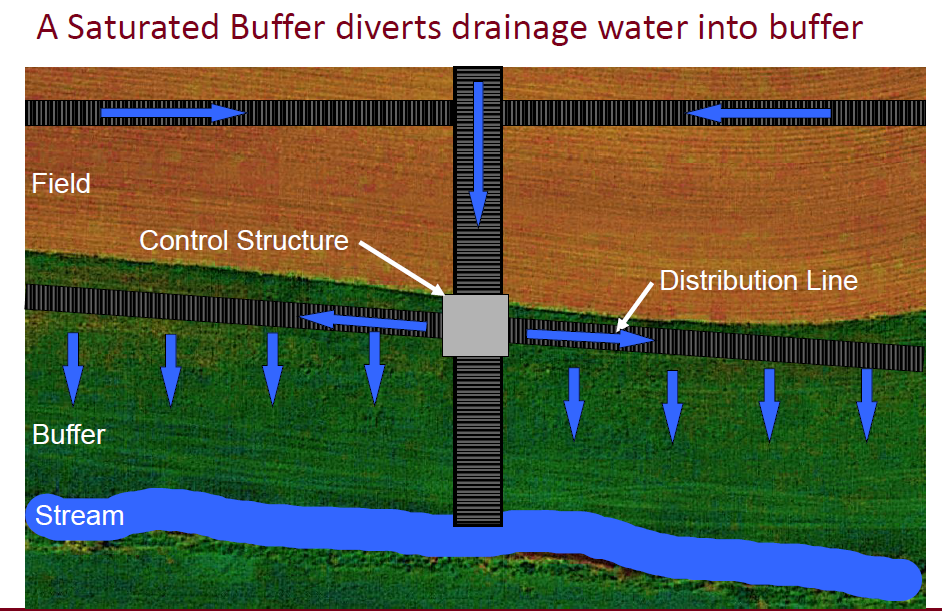Principal Investigator: Gary R. Sands
Organization: University of Minnesota, Department of Bioproducts & Biosystems Engineering
Award Amount: $190,923
Start Date: May 1, 2017 | End Date: May 2022
Project Manager: Heather Johnson (Heather.Johnson@state.mn.us)
Final report is located in the Minnesota Water Research Digital Library.
The goal of the project was to develop guidance for the design and planning of saturated buffers. Saturated buffers are a new conservation practice that can be used to help reduce nitrate-nitrogen loss from tile drains on agricultural land.
Saturated Buffer Planning Tool
The following spreadsheet is a simple planning tool to design effective saturated buffers. It was designed to guide local planners and conservation professionals through the planning process and help them assess whether a given site is likely to have a successful saturated buffer installation. It also provides guidance on the key decisions that must be made during the design phase.
The following Excel file may not meet all the guidelines for the Americans for Disabilities Act. This information can be made available in alternative forms of communication upon request by calling 651-201-6000. TTY users can call the Minnesota Relay Service at 711. The MDA is an equal opportunity employer and provider.
Use the link below to download the file.
Saturated Buffer Planning Tool (Excel)
Background
Despite the clear benefits to agricultural production, the use of tile drainage can have both positive and negative effects on the environment. Improved drainage allows more water to soak into the soil, reducing the amount of surface runoff from the field. A decrease in surface runoff reduces the loss of sediment and nutrients to lakes, rivers and streams. However, tile drainage increases the movement of water through the soil below the surface. This flow can increase the losses of nitrate-nitrogen, soluble salts and other contaminants to our waters.
Saturated buffers are a newer practice for removing nitrate-nitrogen from drainage water at the edge of a field. In a normal or conventional tile-drained landscape, tile lines often bypass a buffer zone, and empty directly into a waterway. A saturated buffer reconnects the tile water with the buffer. Instead of bypassing the buffer zone, a control structure distributes water from the tile through the buffer. The water remains in contact with soil layers containing higher levels of soil carbon, thus creating conditions favorable to microbial denitrification. During microbial denitrification, the microorganisms in the soil remove nitrate-nitrogen by converting it to a form of nitrogen gas. The removal of nitrate-nitrogen has a positive effect on water quality.
There is tremendous potential for saturated buffers to help reduce the amount of nitrate lost to our waterways from tile-drained landscapes. However, more information is needed to understand the proper site selection and design to ensure the water quality benefits are achieved.
Objectives
The five primary objectives for this project were:
-
Analyze existing saturated buffer data to inform computational model selection and initial development as well as fine tune field measurement techniques.
-
Develop a computational model to serve as the foundation for understanding saturated buffer performance and to determine key site parameters necessary for developing the model’s predictive capabilities.
-
Conduct field studies using novel techniques to quantify 3-D water table behavior in saturated buffers as a function of soil and other site properties.
-
Develop a simple planning tool (spreadsheet) to design effective saturated buffers that is appropriate for local planners and conservation professionals.
-
Conduct extension and outreach to train professionals on how to use the planning tool and promote implementation of saturated buffers within Minnesota.


